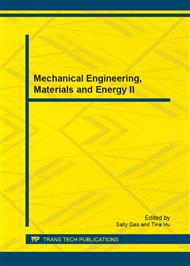p.211
p.216
p.221
p.225
p.230
p.234
p.239
p.245
p.250
New Procedure for Constraint Determination in Mobility Analysis for Classical Coupled Linkages
Abstract:
A coupled mechanism is different from common parallel mechanism with independent limbs, so it is impossible to analyze the constraint and mobility by the traditional method based on screw theory. To overcome this problem, this paper proposes a new procedure to determine the overconstraint for coupled mechanisms based on screw theory, where a coupled mechanism is decomposed into several basic elements. The validity of the new procedure is further proved from the constraint and mobility analysis for a classical mechanism.
Info:
Periodical:
Pages:
230-233
Citation:
Online since:
January 2013
Authors:
Keywords:
Price:
Сopyright:
© 2013 Trans Tech Publications Ltd. All Rights Reserved
Share:
Citation:


